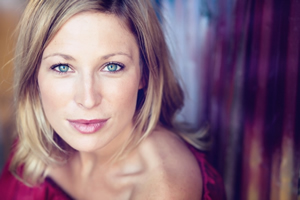Last year, Opera Carolina formally announced that it would be performing a Tchaikovsky opera, Eugene Onegin, for the first time in its 64-year history. When this coincided with the premiere of Sleeping Beauty, North Carolina Dance Theatre artistic director Jean-Pierre Bonnefoux’s restaging of the full three-act ballet, all that was needed was a little initiative from the Charlotte Symphony to enlarge this happy coincidence into a purposeful celebration. On top of two orchestral concerts devoted to Tchaikovsky, they’ve ladled on two chamber music concerts devoted to the Russian master, effectively cementing the 35-day tribute. Toss in a little mistaken lepidoptery, and the Ulysses Festival of the Arts was born.
But funding didn’t suddenly materialize to bankroll sheet music and rehearsal time necessary to master Sleeping Beauty’s two-hour score – let alone pay the orchestra for the complete nine-performance run of the refurbished ballet. So the CSO was absent at the ballet. Onegin was a better example of what the new Ulysses synergy can become – when performing organizations, funding cycles, and marketing savvy come into alignment. But arguably the best example so far of Ulysses synergy has been the latest in the Symphony’s series of KnightSounds concerts, “To Tchaikovsky With Love.” Not only were Opera Carolina and NC Dance Theatre ably represented at the concert, a couple of topflight local actors played key roles, and the whole evening was neatly packaged in an overarching epistolary theme.
As usual, there were pre-concert crudités and appetizers available in the Knight Theater lobby for ticketholders. And once again, KnightSounds programs were printed in a novel format, this time a faux message on faux parchment to patrons from Tchaikovsky informing us in letter form what we were about to see. Nor did the letter motif end there, for the two thespians, Susan Roberts Knowlson and Dan Brunson, read excerpts from the correspondence between Tchaikovsky and his quirky patroness Nadezhda Von Meck, while Opera Carolina’s contributions, excerpts from Onegin, included Dina Kuznetsova reprising her rendition of the celebrated Letter Scene. Here is where the argument comes in on whether this is Ulysses’ finest hour, for instead of prevailing upon Kuznetsova to bring buried treasure to the KnightSounds concert, they had her reprising ready inventory in the middle of Onegin’s run at Belk Theater. Similarly, the excerpts from Tchaikovsky’s Symphony No. 4 and Swan Lake were previews of the music that the Symphony would be presenting the following week.
Questions of duplication – and length – aside, the concert was nothing less than magnificent with both Christopher Warren-Green and James Meena, maestros of the Symphony and Opera Carolina respectively, performing at the podium and collaborating in the opening remarks. For abundant reasons, Kuznetsova was stronger, fresher, and more impressive in her concert performance of the Letter Scene than she had been at Belk Theater the previous Saturday night. Decked out in a gleaming gray contemporary gown, freed from the constraints and the stage business of portraying a shy and giddy 16-year-old girl, and with no need to pace herself as Tatyana for two more acts of opera, Kuznetsova could concentrate her full artillery on her preciously brief moment in the spotlight. The soprano’s pianissimos were more luscious, her high notes more piercingly pure, and the emotional crest of the long soliloquy, shorn of the quaintness of a teenager spinning around in her pajamas at the peak of her romantic reverie, gained a new and different kind of power.
Kuznetsova also gained by singing to us in a smaller house from the lip of the stage, and while the Symphony normally sounds better onstage at the Belk than they do at the Knight, the comparison between the orchestra’s sound when conducted in the pit at the Belk was in no way averse when Meena could lead the musicians in full view directly behind the singers. On the other hand, with no singers or dancers onstage, the concert finale was doubly anticlimactic as Meena conducted the Act 2 waltz from Onegin immediately after Kuznetsova’s exit. Earlier in the evening, Warren-Green had conducted the “White Swan Pas de Deux” from Swan Lake, presumably a foretaste of the selections from the ballet to be offered at the Symphony’s upcoming All-Tchaikovsky program. More than compensating for the acoustic disparity between the two halls, two of NC Dance Theatre’s preeminent soloists, Traci Gilchrest and Addul Manzano, danced the piece. Two elegant visions in white, Gilchrest and Manzano had only a strip of the downstage to work with, yet the performance never seemed compromised at NCDT’s customary venue.
The final movement from Symphony No. 4 will no doubt bloom more fully at Belk Theater, where the French horns will not sound so strangely distant. But the snippets of correspondence delivered by Brunson as the composer and Knowlson as his generous, jealous, capricious, and ultimately enigmatic benefactress added a rich patina to the evening, as if we were in a studio watching the presentation of a radio documentary – with the added bonus of seeing Manzano and Gilchrest in action. The correspondents sat on opposite corners of the stage at writing desks, occasionally wielding quills when the spotlight was on them. During the musical selections, they would remain in place, Tchaikovsky gazing at the spectacle with evident satisfaction, and Von Meck radiating the delight and pride of hearing music commissioned by – and dedicated to – her. The CSO sounds best at the Knight as a big band playing pops or jazz, so it wasn’t surprising that the instrumental highlight of the evening was the March from Symphony No. 6, with trombones, trumpets, and timpani all in fine form. Individually, concertmaster Calin Lupanu and principal cellist Alan Black had standout moments, taking luxuriant solos behind the dancers in the Pas de Deux.











